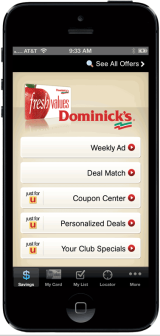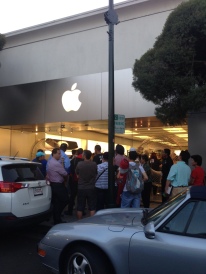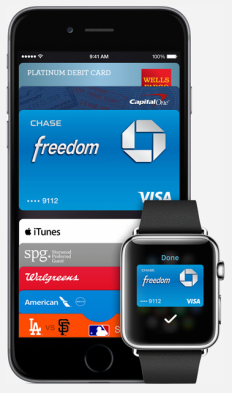 Over the past few months I’ve been working with a first time homebuyer who is searching for a single-family home in the heart of the Silicon Valley. Yikes, I had to help him overcome the sticker shock of San Francisco Bay Area real estate prices in comparison to prices in his hometown in Alabama! What is most exciting about this buyer is that he clearly sees the value of owning his own home and put a financial plan together to make it happen. He is currently renting an apartment at a rate equal to the monthly mortgage payment he will pay. The big “#winning” for him are the tax benefits of owning a home and the option of controlling his own space. Apparently his next-door apartment neighbor has an affinity for pungent cuisine in the early morning. “There are certain smells that I just can’t deal with in the morning.” I totally get that.
Over the past few months I’ve been working with a first time homebuyer who is searching for a single-family home in the heart of the Silicon Valley. Yikes, I had to help him overcome the sticker shock of San Francisco Bay Area real estate prices in comparison to prices in his hometown in Alabama! What is most exciting about this buyer is that he clearly sees the value of owning his own home and put a financial plan together to make it happen. He is currently renting an apartment at a rate equal to the monthly mortgage payment he will pay. The big “#winning” for him are the tax benefits of owning a home and the option of controlling his own space. Apparently his next-door apartment neighbor has an affinity for pungent cuisine in the early morning. “There are certain smells that I just can’t deal with in the morning.” I totally get that.
This buyer is the quintessential engineer who thrives on process and data. The search process has been very methodical replete with weighted ranking system across buyer needs. I love it. So cool. I applaud the zeal he brings to the search and the questions he asks. “Can you help me understand the various expenses I should plan for after I buy my home?” Great question.
Getting your financial house in order to buy a home is a first critical step. Understanding the cash flow needed to own and maintain a home is the second. Saving to buy a home shows great financial discipline. Owning a home requires a commitment to maintaining the discipline.
I helped my buyer understand the financial requirements by helping him build a monthly budget that breaks out costs by fixed home ownership costs and variable costs. I am defining fixed costs as expenses that are required to own a home. For example, costs include:
Mortgage Payment: Paid monthly.
Home Owner Association Dues (if applicable): Paid monthly.
Property Tax: Paid 2x a year, but good to budget for each month.
Property tax is an important cost to examine closely for it can be a substantial amount depending on the state you live in. For example, in the San Francisco Bay Area where the average home price is above $1M, the tax rate requires budgeting at least $1K a month to pay the annual amount. I know, YIKES! That’s more than a car payment. A mortgage lender and/or a financial advisor will help you understand the tax implications in your local area and how best to budget for them. For example, tax payments can be included in an impound account to be part of your monthly mortgage payment. Think through how best to budget for tax payments. Trust me, you don’t want to be surprised by the tax bill.
Home Insurance: Various payment schedules are available depending on provider, but good to budget monthly.
Other Fixed Costs: Costs include electricity/gas, water and garbage. Unfortunately there are no work arounds to having these services. Having your own landfill is not a good idea.
Once the fixed costs are defined, an understanding of the money available for the variable costs, or everything else, will become clear. I know…not much is left of your monthly paycheck!!! Now it’s time to prioritize and budget for what variable costs are important and not important including…
Medical/Dental Insurance: What are the best and lowest cost plans available to you? Does your employer provide or do you need to pay for some or all of these policies yourself?
Transportation: Car payments, car insurance, gas, etc. What’s the cheapest way to get to work? Maybe walk more?
Food: Do you want to eat? If so, do you want to shop at a grocery store or grow your own? J He he. Remember eating Top Ramen in college? Top Ramen is a food staple for homeowners too!
Services: Netflix, cell phone, cable, Internet, dry cleaning, home cleaning, etc. Maybe it’s no longer a “want to come over for a Netflix and chill?” and now a “want to just come over?”
Entertainment: Going out to eat, movies, concerts. I had to cut my Entertainment budget BIG TIME once I bought my first home. Free concerts in the park always work for a date night.
Vacation: Do you take an annual trip home or go on a vacation? Maybe take the train home instead of fly? Maybe it’s Europe in hostels or cashing in the hotel rewards points to save on hotels?
I know, I know. This gets a little overwhelming. However, it’s SUPER IMPORTANT that these costs are identified and a budget is built. Understanding the monthly finances gives you power to control what to spend and not spend on. Knowledge is power. Unfortunately, I know people who own homes who don’t know what their monthly mortgage payment is. They set it up once on automatic bill pay and forget. HOW SCARY IS THAT? The big consumer learning from the mortgage crisis in 2008 is don’t buy a home that you can’t afford…no matter how affordable it seems on paper! If budgeting gets tedious, always keep your mind on why you are being so budget conscious. YOU OWN YOUR OWN HOME. That’s cool.
My goal is to share with others the great opportunities, benefits and risks of home ownership to empower them to make their own decisions for what works best.
Please feel free to Tweet me with questions about this post @ericdunstan .
 he thought of owning a home never crossed my mind until my early thirties. I remember a myriad of limiting thoughts crossing my mind including, “there is NO WAY I can afford a home,” or “I don’t have the time or the money to maintain a home” or “owning a home is something you do when you settle down…and renting is still cheaper.” Looking back on those thoughts I can’t help but laugh. Yes, those thoughts are all legit, but SO NOT true.
he thought of owning a home never crossed my mind until my early thirties. I remember a myriad of limiting thoughts crossing my mind including, “there is NO WAY I can afford a home,” or “I don’t have the time or the money to maintain a home” or “owning a home is something you do when you settle down…and renting is still cheaper.” Looking back on those thoughts I can’t help but laugh. Yes, those thoughts are all legit, but SO NOT true. I remember being swept up in the early
I remember being swept up in the early 




 The leadership team learned that our innovative product dynamo was developing code on a work laptop, but was backing up to a personal cloud service. Our IT team had no policy in place to prevent or address this. Yikes. The company lost control of a proprietary asset. This employee was quickly reprimanded and asked to back up to a secured back up solution. Unfortunately, the relationship quickly soured and the decision was made to fire the employee. The employee was escorted out of the building, but a copy of the code was backed up to the personal cloud only hours before the termination. Clearly the employee saw this coming. Shit…the code was gone. The investment in the employee’s talents was wasted and company assets were outside of the company’s control.
The leadership team learned that our innovative product dynamo was developing code on a work laptop, but was backing up to a personal cloud service. Our IT team had no policy in place to prevent or address this. Yikes. The company lost control of a proprietary asset. This employee was quickly reprimanded and asked to back up to a secured back up solution. Unfortunately, the relationship quickly soured and the decision was made to fire the employee. The employee was escorted out of the building, but a copy of the code was backed up to the personal cloud only hours before the termination. Clearly the employee saw this coming. Shit…the code was gone. The investment in the employee’s talents was wasted and company assets were outside of the company’s control.

 I was glued to my computer on September 9th to watch the live stream of Apple’s BIG
I was glued to my computer on September 9th to watch the live stream of Apple’s BIG 


 Apple Pay will be available on the iPhone 6 and Apple Watch devices for it requires technology included only in this hardware. Yes, the iPhone 6 and Apple Watch will set sales records and proliferation will be fast across the globe. However, Apple Pay will not be available on legacy devices that will slow down the adoption rate. Additionally, Apple Pay will be limited to major retailers including Whole Foods, Macy’s and Toys R Us. Yes, over 200,000 stores will be accepting contactless payments through Apple Pay. I’m sure Apple is busy negotiating partnerships with several other major retailers as well and the footprint will grow even more.
Apple Pay will be available on the iPhone 6 and Apple Watch devices for it requires technology included only in this hardware. Yes, the iPhone 6 and Apple Watch will set sales records and proliferation will be fast across the globe. However, Apple Pay will not be available on legacy devices that will slow down the adoption rate. Additionally, Apple Pay will be limited to major retailers including Whole Foods, Macy’s and Toys R Us. Yes, over 200,000 stores will be accepting contactless payments through Apple Pay. I’m sure Apple is busy negotiating partnerships with several other major retailers as well and the footprint will grow even more. I started off my week with a trail run and then a quick stop off at a downtown locally owned coffee joint. The coffee shop is filled with laptop toting Silicon Valley types, local Lululemon wearing trail bunnies and a myriad of salon and spa employees on their way to bill $150 for a 1-hour deep tissue massage. I stood in line and waited to pay for my overpriced cup of coffee. I’m an old school guy and paid in cash while most people paid using their debit/credit card. It seems strange to me to pay for something so cheap with plastic…but, hey, I AM old school right? However, of the 10+ payment transactions I saw, no one paid with his or her phone using the NFC feature of the payment reader. Now don’t panic…you are not the only one who has not seen the NFC technology in action. Very few merchants even have a card reader that includes NFC technology.
I started off my week with a trail run and then a quick stop off at a downtown locally owned coffee joint. The coffee shop is filled with laptop toting Silicon Valley types, local Lululemon wearing trail bunnies and a myriad of salon and spa employees on their way to bill $150 for a 1-hour deep tissue massage. I stood in line and waited to pay for my overpriced cup of coffee. I’m an old school guy and paid in cash while most people paid using their debit/credit card. It seems strange to me to pay for something so cheap with plastic…but, hey, I AM old school right? However, of the 10+ payment transactions I saw, no one paid with his or her phone using the NFC feature of the payment reader. Now don’t panic…you are not the only one who has not seen the NFC technology in action. Very few merchants even have a card reader that includes NFC technology. 
 Apple announced a few months back a strategic alliance with Big Blue. I provided my point of view in an
Apple announced a few months back a strategic alliance with Big Blue. I provided my point of view in an  I am using the term “marketing” very loosely here. Marketing is mostly understood as all the tangibles – online, website SEO, paid search, social media, etc. Little regard is given to the core marketing principals of the 4 Ps, for example. When most people hear the words “the 4Ps” they think about the OPP song from the mid 80s and NOT the critical marketing concepts of Product, Price, Place, Promotion. Clearly most people get stuck on the Promotion part….which is putting the cart before the horse.
I am using the term “marketing” very loosely here. Marketing is mostly understood as all the tangibles – online, website SEO, paid search, social media, etc. Little regard is given to the core marketing principals of the 4 Ps, for example. When most people hear the words “the 4Ps” they think about the OPP song from the mid 80s and NOT the critical marketing concepts of Product, Price, Place, Promotion. Clearly most people get stuck on the Promotion part….which is putting the cart before the horse.